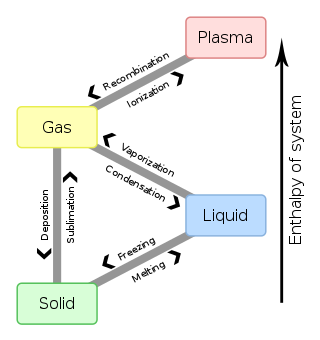Quasi-solid
Falsely-solid, or, semisolid is the physical term for something whose state lies between a solid and a liquid. While similar to solids in some respects, such as having the ability to support their own weight and hold their shapes, a quasi-solid also shares some properties of liquids, such as conforming in shape to something applying pressure to it and the ability to flow under pressure. The words quasi-solid, semisolid, and semiliquid may be used interchangeably.
Quasi-solids and semisolids are also known as amorphous solids because at the microscopic scale they have a disordered structure unlike the more common crystalline solids.
Examples
Petroleum jelly - a semi-solid hydrocarbon C15H15N, called petrolatum,[1] chemical name 1,1,2-Trimethylbenzeindole,[2] has semisolid properties. It is used topically on human skin to promote healing of minor irritation or burns. Other examples are guacamole, grease, mayonnaise, peanut butter, toothpaste, and hand sanitizer.
See also
References
